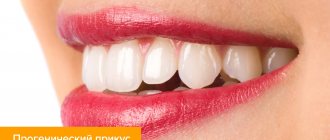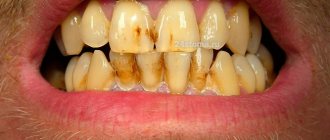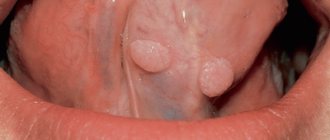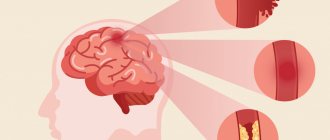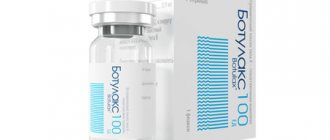- Jaw muscle spasm
- Development of the disease
- Symptoms of TMJ problems
- Diagnostics
- Prevention of hypertonicity of the TMJ muscles
- Prevention of hypertonicity of the TMJ muscles
Spasm of the jaw muscles is called trismus, and can be single or multiple.
The jaw muscles are always toned (in background activity, ready for action). Muscle hypertonicity represents increased activity and tension, with decreased ability to stretch. With mild hypertonicity, a person experiences slight discomfort. In the case of moderate or severe hypertonicity, muscle spasm occurs, accompanied by pain. In difficult cases, the jaw cramps so that the person cannot open the jaw. Muscle spasm under the jaw
there is one-sided and two-sided
There are several causes of jaw muscle spasm. Common causes may be internal diseases of an infectious or neurological nature:
- Neoplasms in the brain of benign and malignant nature.
- Intracranial hemorrhage.
- Meningitis.
- Diseases of the nervous system (stress, depression).
- Tetanus, rabies.
- Anatomical tissue defects.
Local causes are diseases of the maxillofacial area and injuries:
- Inflammatory process of bone tissue (osteomyelitis).
- Cellulitis and abscess.
- Inflammatory process in the soft tissues around wisdom teeth.
- Inflammation of the periosteum.
- Unsuccessful anesthesia during dental surgery on the lower jaw.
- Dislocation, fracture or crack in the lower jaw.
- Arthrosis or arthritis of the TMJ.
- Inflammatory process in the trigeminal nerve.
- Hypothermia or overload of the lower jaw.
- Periodontitis or pulpitis in an advanced stage.
- Incorrect installation of the bracket system or poor-quality prosthetics.
- Sports injuries (common in boxers who use mouthguards, weightlifters who clench their teeth while lifting weights, scuba divers who use an oxygen tank mouthpiece for long periods of time).
It is important to consult a dentist so that he can diagnose such a multifaceted disease as spasm of the jaw muscles.
The dentist will be able to find out the reasons after examination, history taking, and diagnostics.
Development of the disease
A provoking factor appears that causes a single muscle tension. Constant hypertonicity gradually develops into spasm. Pain weakens the muscle over time as the person tends to use the muscle less. The result is a decrease in muscle tone
. Against this background, compensatory tension of the muscle located on the opposite side of the jaw develops.
With muscle pain syndrome, the patient experiences constant pain in the area of the masticatory muscles, which intensifies with movement of the lower jaw. When closing and opening the jaws, a clicking sound is heard in the TMJ. Visually, zigzag deviations of the jaw to the side or forward are observed. Bruxism develops
. Sometimes pain syndrome manifests itself in the upper jaw, sinuses, superciliary arches, and ringing or noise in the ears develops.
Hypertonicity of the masticatory muscles
Causes
The main causes of hypertension are:
- chronic stress and unstable psycho-emotional background;
- flaws in dental treatment (in particular, incorrectly placed fillings);
- missing several teeth;
- postural imbalance, manifested by asymmetry of the shoulders and shoulder blades, different leg lengths and other pathologies of the spine.
Clinical picture
In the absence of treatment, against the background of hypertonicity, dysfunction of the temporomandibular joint (abbr. TMJ) develops, which can accompany myofascial pain syndrome and has pronounced external manifestations - facial asymmetry, visual “weighting” of the lower jaw (it becomes more massive, the oval of the face changes) . Such patients often suffer from bruxism (uncontrolled clenching and grinding of teeth during sleep, during physical activity, stressful situations, etc.).
Characteristic signs of hypertonicity of the masticatory muscles will also be:
- noticeable swelling;
- pathological abrasion and high sensitivity of teeth;
- malocclusion and other dental deformities;
- headaches, including migraines;
- facial pain, spasms.
As a complication against the background of long-term disorders, overstrain of the neck muscles can develop, spreading to the back and resulting negative consequences in the form of poor posture.
Diagnostics
Diagnosis of hypertonicity of the masticatory muscles includes dental and neurological methods:
- palpation examination;
- orthopantomogram;
- teleroentgenogram (abbr. TRG) of the lateral surface of the head;
- axiography;
- electromyography (abbr. EMG) of muscles, etc.
The examination also evaluates clinical signs, including head position, movements of the cervical spine, general expression and level of sensitivity of the face, facial expressions, and others.
Treatment
The main goal of treating hypertonicity of the masticatory muscles is to relax the muscles and eliminate pain. To achieve this, the following methods are used today:
- wearing trainers (during this therapy, the patient first begins to notice manifestations of bruxism, and then learns to control them, keep the tongue in the correct position; thanks to the trainers, the teeth are protected from damage, and hypertonicity is gradually relieved over time);
- shock wave therapy (physiotherapy stimulates metabolic processes at the cellular level, improves tissue nutrition, eliminates pain);
- reflexology, acupuncture, massage, osteopathy (targeted effects on the causes of postural imbalance through acupuncture, massage and other techniques).
The emotional background plays a big role, which also requires correction. Sedentary work needs to be diluted with physical activity, doing special relaxing exercises every morning, spending more time in the fresh air, trying to be less nervous and eliminating stress factors as much as possible. The joint work of the doctor and the patient will achieve the desired result in the shortest possible time. With complex therapy, the likelihood of relapse is minimal.
Symptoms of TMJ problems
The disease manifests itself with the following symptoms:
- Painful sensations occur on palpation.
- When opening the mouth, the patient feels a sharp pain.
- Due to pain, a person experiences difficulty eating and communicating.
- Breathing through the mouth is difficult.
- To the touch, the chewing muscles are compacted and slightly increased in volume.
- Facial asymmetry with unilateral spasm.
- Low-grade fever.
- Headache.
The gnathologist
carries out differential diagnosis with a fracture or dislocation of the jaw, as well as with an infectious lesion.
There are three degrees of disease progression: mild (the patient is able to open his mouth four centimeters), moderate (the mouth opens two centimeters), severe (the patient cannot open his mouth more than one centimeter).
Types of muscle hypotonicity
Depending on the cause that led to the development of muscle hypotension, two forms of pathology are distinguished:
- Congenital - develops as a result of gene mutations or chromosomal abnormalities. This form can be confirmed using a laboratory karyotype test.
- Acquired - due to the adverse effects of negative factors on the child’s body after birth. Hypotonia is observed in children with cerebral palsy who have suffered head and back injuries, neuroinfections, and poisoning with neurotropic poisons.
- Muscle hypotonia is also classified taking into account the localization of the pathological focus:
- central - occurs with various lesions of the brain and spinal cord;
- peripheral - develops as a result of local damage to neurons and is characterized by hypotonia of individual muscles.
In newborns, muscle hypotonia manifests itself in generalized and isolated forms. In the first type, diffuse damage to all muscle tissue is observed, which is accompanied by an extremely serious condition of the child. The isolated type is characterized by hypotonia of individual muscle groups.
Depending on the stage of the pathological process, muscle hypotension in children can be acute or chronic.
Diagnostics
The patient experiences pain from jaw movement. In this situation, it is necessary to consult a doctor as soon as possible to begin treatment. It is necessary to find out how to relieve jaw muscle spasm in order to restore health.
During the examination and history taking, the doctor observes the patient, paying attention to his posture and head tilt, neck movements, facial expressions, and facial expressions. The state of the muscles during speaking and swallowing is determined. The presence of the corneal reflex is checked, and the amplitude of movements of the lower jaw is determined. The doctor finds out whether there are problems with the spine.
The patient is examined using diagnostic equipment, an occlusiogram is prescribed to determine the type of bite, and its dynamics and statics are measured. If necessary, an X-ray of the TMJ and an orthopantomogram of the jaws are prescribed, and an electromyographic study is performed.
Lips
The features and techniques of lip correction are very diverse, and their choice depends on the patient’s age, style type (the work is carried out as part of an image modeling program), the presence of asymmetry, etc. However, this is a topic for a separate article. In the context of this material, I would like to focus on the goals of correction. They are determined not only by the wishes of the patient, but also by the characteristics of individual features of his face, their proportional and dynamic correspondence to each other.
Goals of lip correction:
- restoration of lost volume due to age-related changes;
- asymmetry correction;
- changing the shape if the patient does not like it or does not match his facial features;
- giving them naturalness after unsuccessful previous corrections.
The dynamic component of the image is most evident thanks to the lips. Large or small, wide or narrow, young or old, lips are the center of emotional perception. Therefore, it is very important to carry out correction taking into account the individual characteristics of the patient’s facial expressions.
Filler introduced without taking into account muscle tension and facial activity of the lips can create an artificial effect. A striking example is the smoothing of natural relief and a tense smile, which can be present even when the lips are relaxed and at rest.
Prevention of hypertonicity of the TMJ muscles
Preventive measures against hypertonicity of the lower jaw muscles will help prevent the disease with an integrated approach. It is much easier to follow the general recommendations of doctors than to face a painful spasm of the TMJ. Prevention includes the following activities:
- Preventive visits to the doctor every six months.
- Careful systematic oral hygiene.
- Treatment of caries at its first symptoms.
- Orthodontic treatment for malocclusion pathologies.
- Disinfection of food products.
- Antitetanus therapy for animal bites.
- A set of necessary vaccinations.
- Do not open your mouth wide (jaw dislocations often occur when trying to bite off a large fruit).
- Do not overuse solid foods and do not chew nuts with your teeth.
- Avoid stressful situations, react less to stress.
How to increase the tone of the facial muscles?
In order to keep your facial muscles toned and always look great, you need to perform a number of simple exercises, regularly visit the beauty salon and follow some recommendations.
Exercises
If you properly and correctly train the facial muscles and take care of them, then the ideal facial architecture can be preserved until old age. Today, entire special sets of exercises have been developed for this purpose, which are known under the general name face-building. Recommendations and instructions on this matter can be found on the Internet, entire books have been written about this, and interesting articles appear regularly. Even the most convinced skeptics have to agree that facial gymnastics has a pronounced positive effect.
Remember that facial exercises are only effective if performed regularly!
Cosmetology
But not only special exercises will help keep your facial muscles toned. The ideal option is to combine face-building with special cosmetic procedures.
A professional facial massage provides a good tonic effect. It is performed both manually and using special massagers. Thanks to it, blood circulation in the muscles is normalized, stagnant fluid is removed, and the muscles awaken to life.
Microcurrent therapy has an excellent stimulating effect on facial muscles: during the procedure, a low-frequency pulsed current is applied to the skin and muscles, causing muscle contraction and lengthening. After just a few procedures, a pronounced lifting effect becomes noticeable.
Consequences of jaw spasm
Trismus is unpleasant for a person not only due to pain. When opening and closing the mouth is painful, the normal process of eating is disrupted and the gastrointestinal tract suffers. When the jaw spasms, breathing is impaired, which leads to constant oxygen starvation of the brain and headaches. This affects the composition of the blood and the functioning of the cardiovascular system.
Trismus caused by infections or tumors causes serious health problems. In this case, long-term serious treatment is required. In the initial stages, pain is completely relieved. For systemic diseases, when trismus is a secondary symptom, complex therapy is necessary.
How to determine decreased muscle tone?
In some cases, manifestations of muscle hypotonicity are not clearly expressed and are not immediately detected by parents and pediatricians. Symptoms may also vary depending on the age of the child and the severity of the underlying disease. During the initial examination of the baby, a decrease in muscle tone is identified as a separate syndrome. To establish the cause of its development, the neurologist prescribes a comprehensive examination of the child and, if necessary, involves specialists of various profiles (endocrinologist, rheumatologist, geneticist, immunologist) as consultants.
Principles of treatment of muscle hypotonia
Therapeutic tactics depend on the underlying disease that led to the occurrence of muscle hypotonicity. Modern medicine offers many effective techniques aimed at treating hypotension. The most commonly used types of conservative therapy are:
- massage;
- physiotherapeutic procedures;
- physiotherapy.
In some cases, children are prescribed medications whose action is aimed at improving blood circulation and stimulating the development of the nervous system.
The first therapeutic gymnastics classes are conducted by a qualified specialist. He explains to the mother what exercises she can do with the child at home in the future. The maximum positive effect is achieved by combining gymnastics with massage and exercises in the pool or bath.
If manifestations of decreased muscle tone are detected in a child, it is necessary to urgently contact a competent specialist. The pediatric neurologist at the Edkarik clinic in Kaliningrad uses the latest developments and techniques that have proven their effectiveness in practice in the treatment and rehabilitation of young patients.
